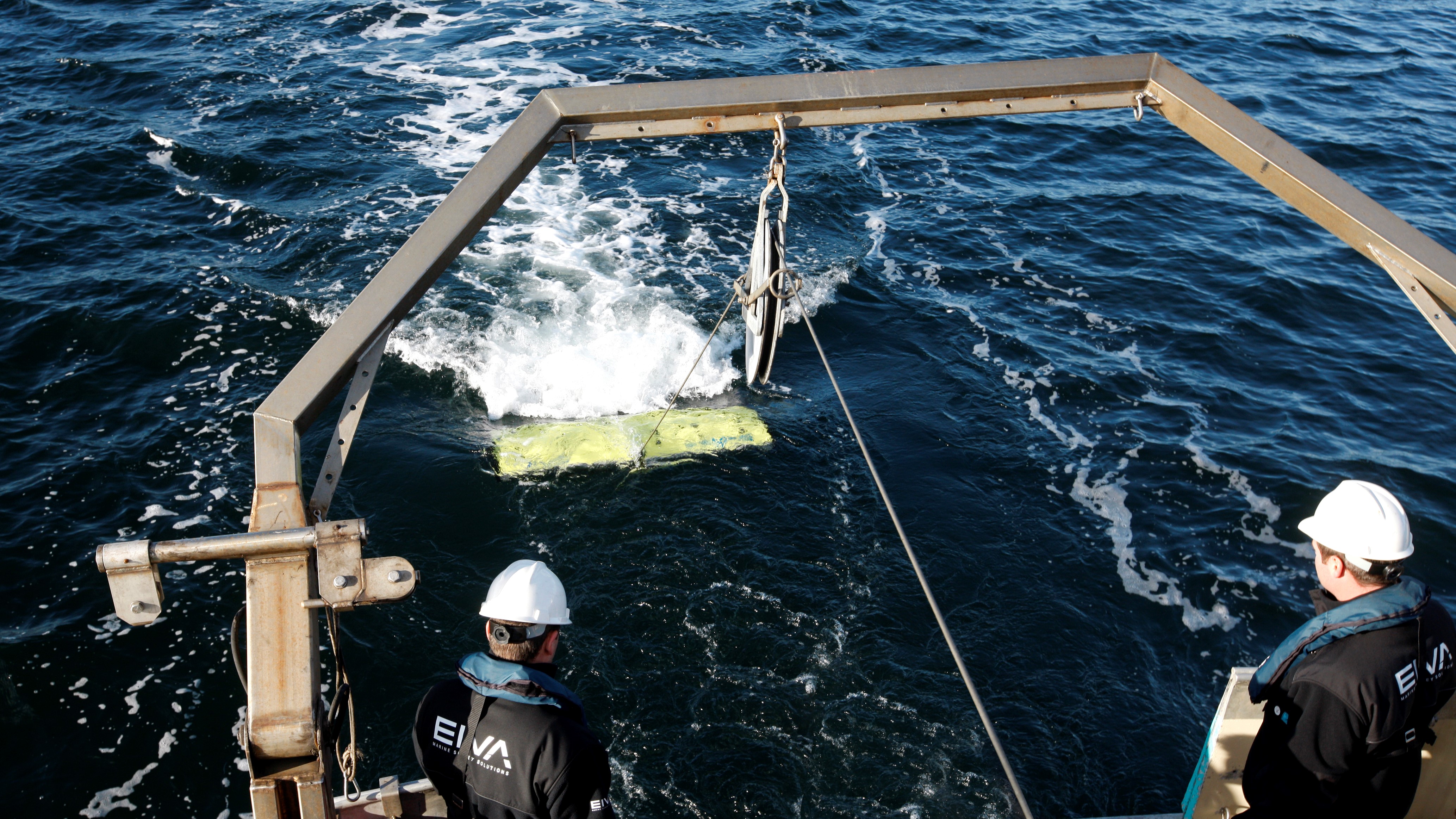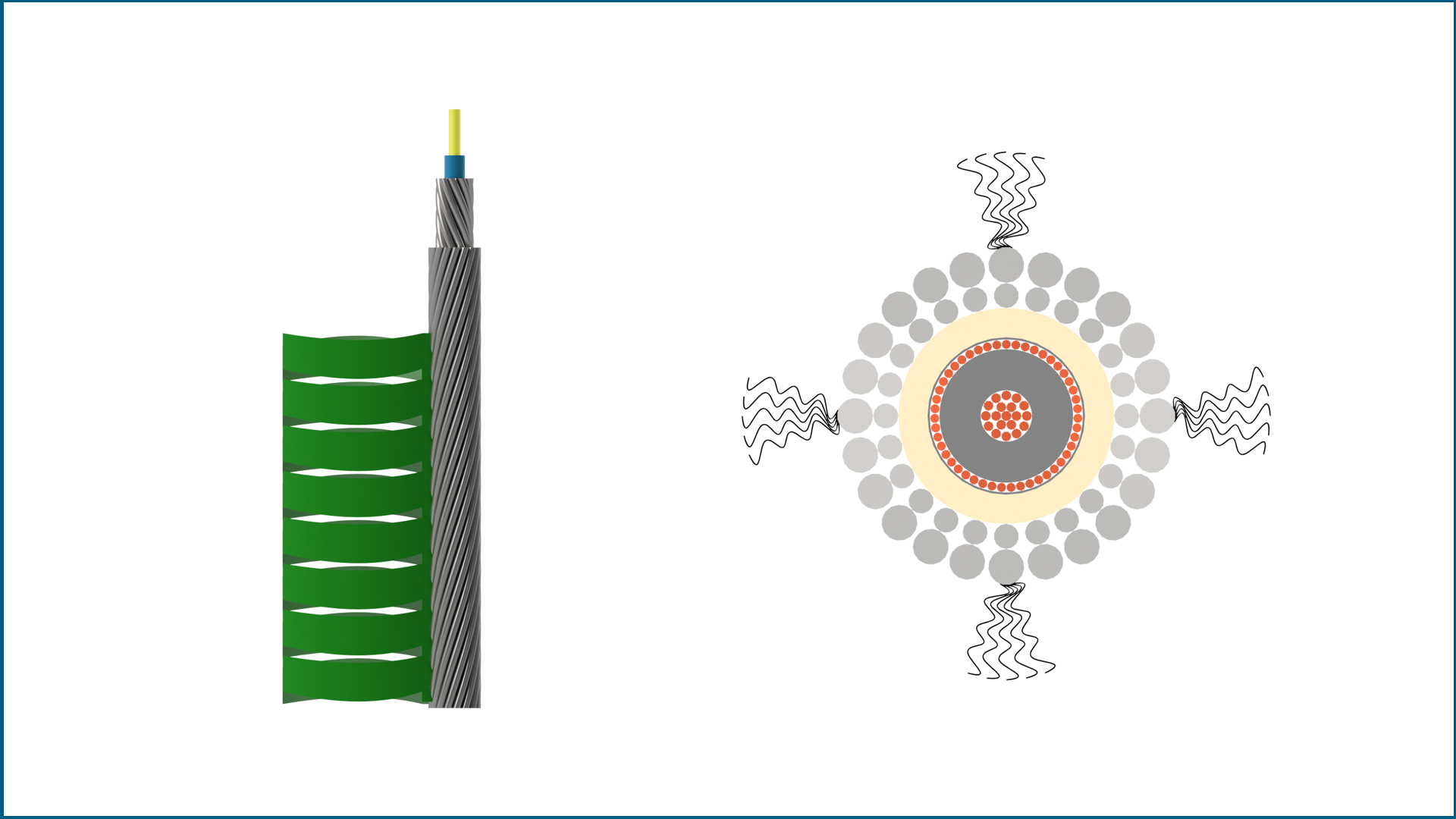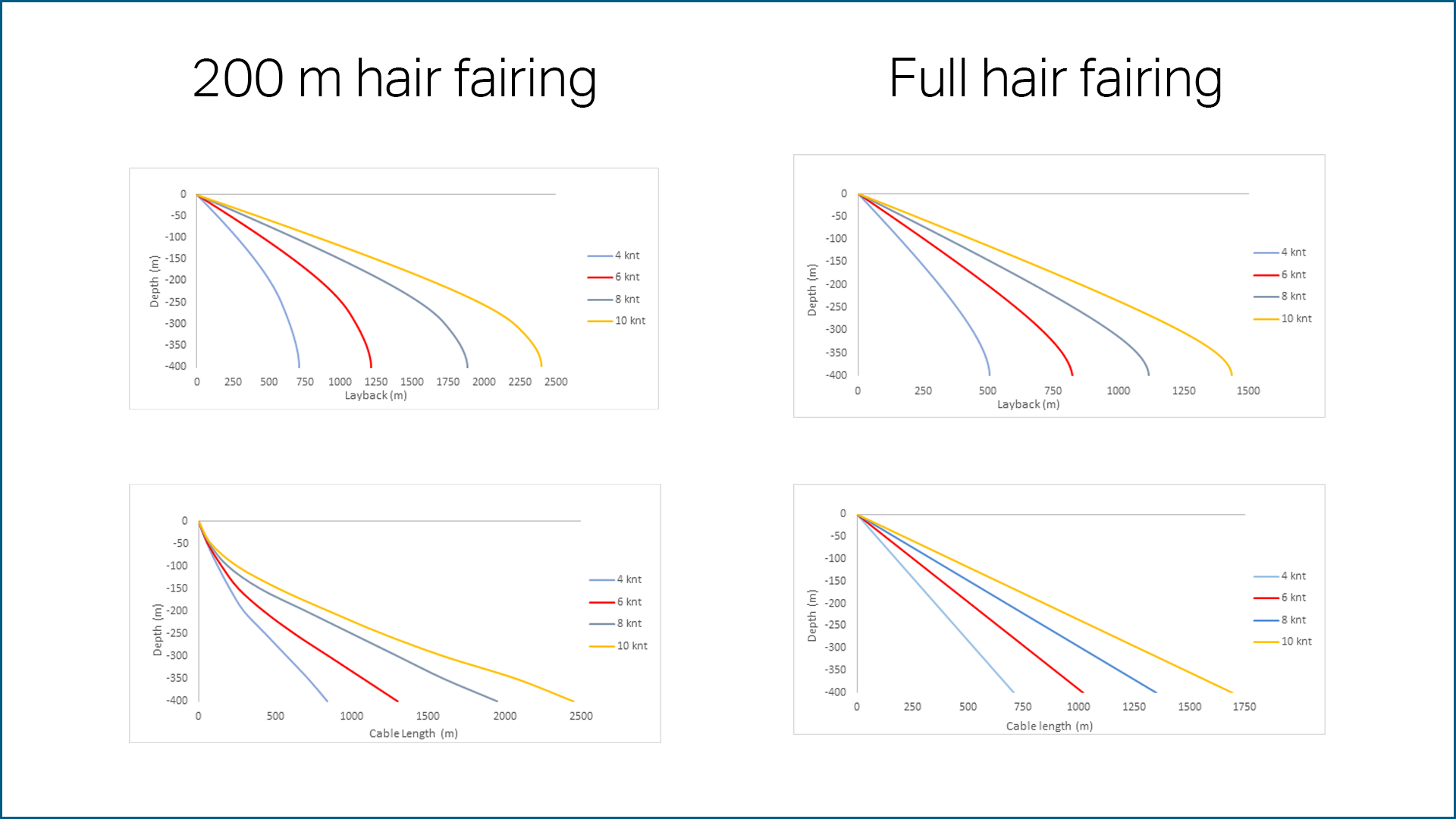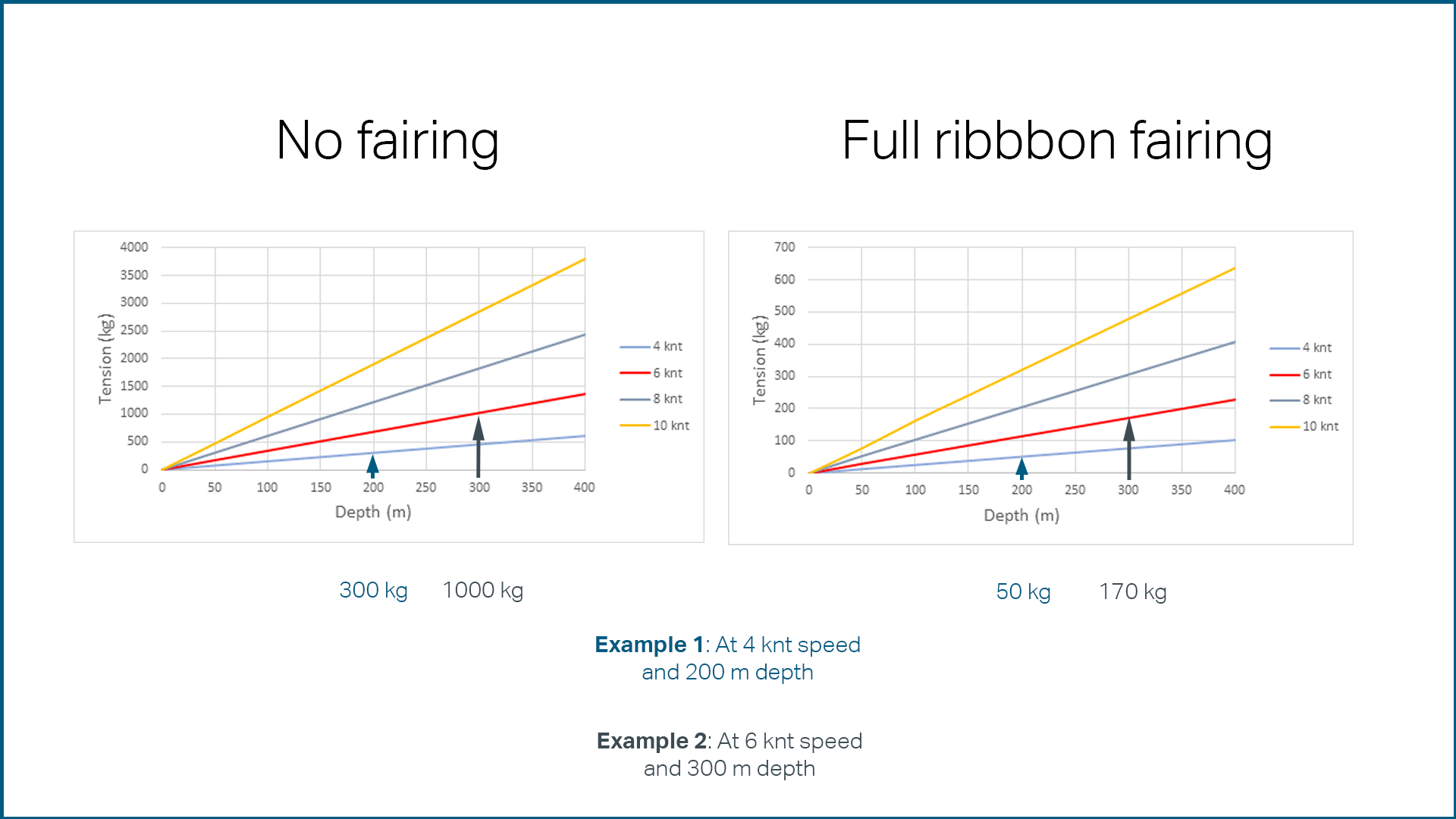
To use this site, please enable javascript

To use this site, please enable javascript
Did you know that when you purchase a remotely operated towed vehicle (ROTV) system, ScanFish or ViperFish, from EIVA, our expert team can provide advice and components for the total system? For example, we offer electrical winches and cables, which are thoroughly tested by our team.
To help customers reduce drag in their ROTV operations, EIVA offers the option of faired tow cables together with the ROTV system. You may for example want to lower drag to enable operations at greater depths, lower layback at high speeds, reduce energy usage and more. Fairing refers to attaching pieces of string (hair-fairing) or plastic ribbon (ribbon-fairing) along the cable. These attachments help eliminate the vortexes generated by the cable’s tube-like shape, which are the source of drag on the cable (typically drag coefficient 1.0-1.3).

By reducing drag, you can lower fuel consumption of operations, which is important for the goal of operating independently for as long as possible, and with as low a carbon footprint as possible. This is particularly the case in autonomous over-the-horizon systems.
Some of the ways fairing reduces drag is by minimising:
The tow cable contributes to a large portion of the drag on both ScanFish and ViperFish ROTVs. Since ViperFish is designed to be so low drag that it is towable by small vessels including USVs, when deployed with a regular tow cable, the cable is the largest contributor to the total drag of the ViperFish system.
To eliminate this source of drag, EIVA offers systems including faired cables in custom configuration to meet your needs. Find guidance on the different fairing types (ribbon or hair), fairing amounts and cable length below.
The two types of fairing ROTV owners can choose to attach to their tow cable are ribbon (drag coefficient: 0.2) and hair (drag coefficient: 0.6). As suggested by the name, ribbon fairing means adding small plastic ribbons to the outside of the cable, while hair fairing means adding small clusters of string, as shown below.

Ribbon (left) vs hair (right) fairing
To achieve the desired low drag while staying within a budget, you may opt for fairing a section of your tow cable rather than the whole cable. To help you choose how much cable to fair for the correct effect, EIVA provides graphs of the effect different operating speeds and depths have on the tension of the system, layback and cable length needed. These are simulated calculations based on EIVA’s collected data.

Examples of graphs for a standard ScanFish system with Ø11.43 mm cable size – these show catenary layback and cable length needed with 200 m hair fairing vs full hair fairing on tow cable
You can check these overviews to see what the effect of different fairing options are predicted to be on your specific setup.

Graphs of tension for two examples of ScanFish operations
By considering your operational needs and desired tension, layback and cable length, you can then check the cost of the different types of cable and find the option which achieves your desired specifications for the lowest cost.
Did you know that EIVA delivers custom setups of ScanFish for customers, such as the ScanFish XL and L, which were developed for customers needing to deploy a specific payload? Reach out to discuss your setup’s needs.
EIVA also conducts operator training courses, helping users to deepen your knowledge and understanding of your ROTV, improve your operator skills and enhance your technical abilities to service the ROTV.